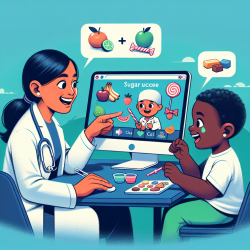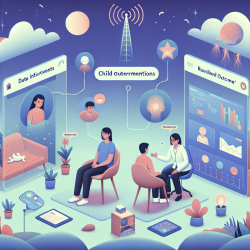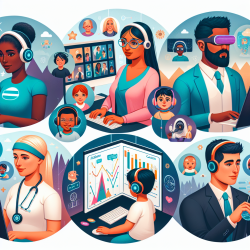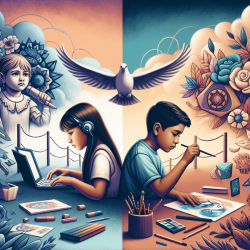Introduction
In the realm of speech-language pathology, practitioners often encounter challenges related to children's nutritional education, which can significantly impact their overall development. A recent study titled How Much Sugar is in My Drink? The Power of Visual Cues explores the effectiveness of visual aids in improving judgments of sugar content in beverages. This research offers valuable insights for practitioners seeking to enhance their skills and create better outcomes for children.
The Power of Visual Cues
The study conducted by Merillat and González-Vallejo (2020) involved 261 participants who evaluated 11 common beverages. The participants were divided into two groups: one with visual aids displaying the sugar content in test tubes and another without. The findings revealed that visual cues significantly influenced participants' perceptions, leading to overestimations of sugar content and reduced intentions to consume sugary beverages.
Implications for Practitioners
For practitioners in speech-language pathology, these findings underscore the importance of incorporating visual aids into educational interventions. By using visual cues, practitioners can help children and their families better understand the nutritional content of their food and drinks, leading to healthier choices. Here are some practical steps practitioners can take:
- Incorporate Visual Aids: Use visual representations of sugar content in educational materials to make abstract nutritional information more tangible.
- Educate on Nutritional Labels: Teach children and their families how to read and interpret nutritional labels effectively, emphasizing the importance of understanding sugar content.
- Promote Healthy Choices: Encourage children to make healthier beverage choices by highlighting the benefits of reduced sugar intake.
Encouraging Further Research
While the study provides valuable insights, it also highlights the need for further research in this area. Practitioners are encouraged to explore additional strategies for improving nutritional education and decision-making among children. By staying informed about the latest research, practitioners can continue to refine their approaches and contribute to better health outcomes for children.
Conclusion
The study on visual cues and sugar content offers a compelling case for the use of visual aids in nutritional education. By implementing these findings, practitioners can enhance their skills and support children in making healthier choices. For those interested in delving deeper into the research, I recommend reading the original paper: How Much Sugar is in My Drink? The Power of Visual Cues.










